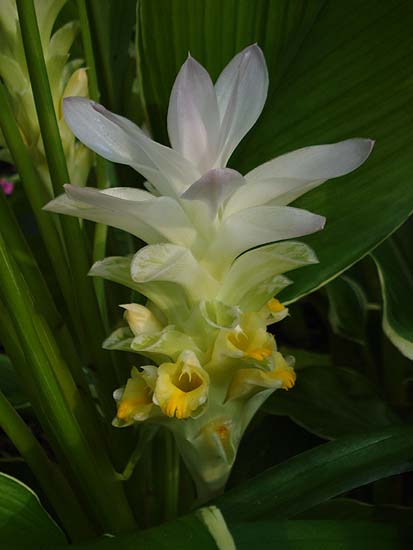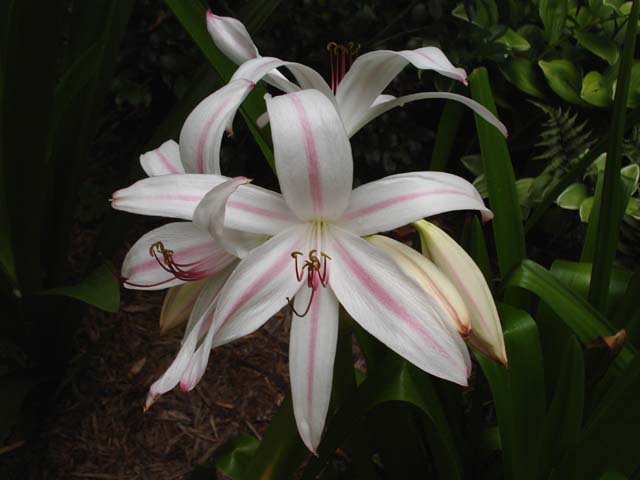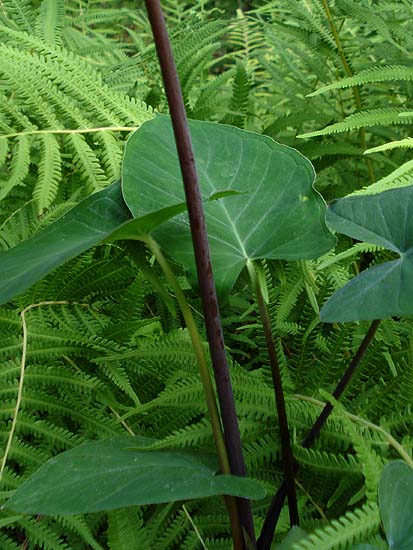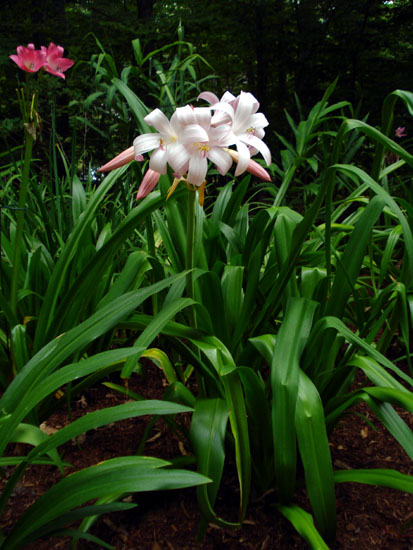Curcuma is a genus in Zingiberaceae family with about 80 species native to Asia. The rhizomes of Curcuma longa are ground to make turmeric, an orange-yellow powder used as a spice in curries. Other species are cultivated for their showy flowers and bold foliage, but they also have aromatic rhizomes, leaves, and stems even though they're not cultivated for turmeric production. The two best performers in the garden so far I grow mostly for their foliage.
Curcuma rubescens has bright red petioles supporting its large green leaves. In bright light, with sufficient moisture, even the leaves will produce red pigments, although never as dark as the petioles. It's known to have showy spring flowers too, but my plants have been reluctant to bloom so far. If they bloom someday that will be great, but even without I am happy.
Curcuma rubescens petioles

'Emperor' is an attractive selection of Curcuma petiolata with excellent variegated foliage, green with a variable creamy margin. It also produces summer flowers, but they're subtle when compared with many Curcuma flowers. They're also mostly hidden by the foliage so they don't really contribute to the overall garden scene, but it's worth your while to part the foliage and take a peek if you enjoy unusual flowers.
Curcuma petiolata 'Emperor' flower

Curcuma petiolata 'Emperor' foliage

Both of these plants are very slow to emerge in the spring, often not showing above ground until late May, causing the gardener to wonder if the cold weather from the previous winter has killed them. However, once they start to grow they do so very rapidly, reaching full height in just a few weeks.



















